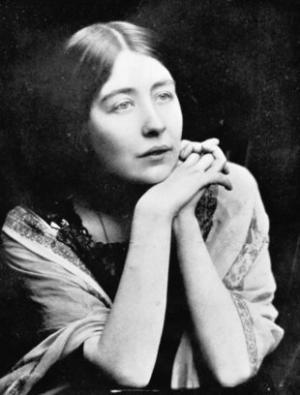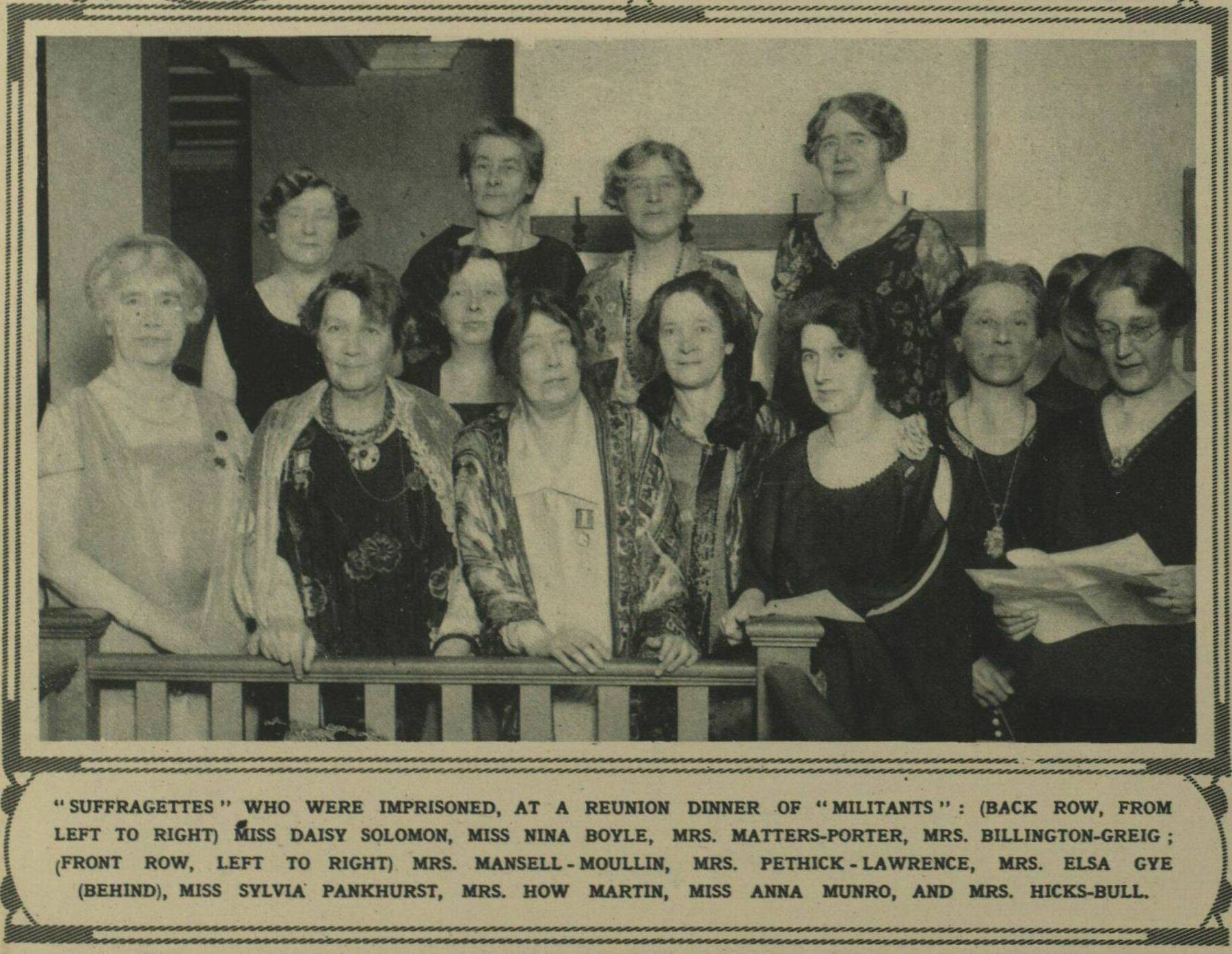

Queer Places:
(1904) 45 Park Walk, Chelsea, London SW
(1910) 3 Cambridge Lodge Studios, 42 Linden Gardens, Kensington, London SW
(1915, 1919) 400 Old Ford Road, Bow, London E
(1920s-1950s) West Dene,
3 Charteris Road, Woodford Green, Essex
120 Cheyne Walk, Chelsea, London SW10 0ES, UK
Sylvia Pankhurst Anti-Warfare Memorial, 583 High Rd, Woodford, Woodford Green IG8 0RD, UK
Trinity Cathedral
Addis Ababa, Addis Ababa Chartered City, Ethiopia
 Estelle
Sylvia Pankhurst (5 May 1882 – 27 September 1960) was the first woman East
London Federation of Suffragettes, later Workers’ Suffrage Federation
founder in 1913. Her name and picture (and those of 58 other women and men's suffrage supporters)
are on the
plinth of the
statue of
Millicent Fawcett in
Parliament Square, London, unveiled in 2018.
Estelle
Sylvia Pankhurst (5 May 1882 – 27 September 1960) was the first woman East
London Federation of Suffragettes, later Workers’ Suffrage Federation
founder in 1913. Her name and picture (and those of 58 other women and men's suffrage supporters)
are on the
plinth of the
statue of
Millicent Fawcett in
Parliament Square, London, unveiled in 2018.
She was an English campaigner for the suffragette movement, a prominent left communist and later an activist in the cause of anti-fascism. She spent much of her later life agitating on behalf of Ethiopia, where she eventually moved.
Estelle Sylvia Pankhurst (she later dropped her first forename) was born at Drayton Terrace, Old Trafford, Manchester, a daughter of Richard Pankhurst and Emmeline Pankhurst, who both later became founding members of the Independent Labour Party and were much concerned with women's rights.[1] Sylvia and her sisters, Christabel and Adela, attended Manchester High School for Girls, and all three became suffragists.
Sylvia Pankhurst trained as an artist at the Manchester School of Art, and, in 1900, won a scholarship to the Royal College of Art in South Kensington, London.[2]
In 1906, Sylvia Pankhurst started to work full-time for the Women's Social and Political Union (WSPU) with her sister Christabel and their mother. She applied her artistic talents on behalf of the WSPU, devising its logo and various leaflets, banners, and posters as well as the decoration of its meeting halls.[3] In 1907 she toured industrial towns in England and Scotland, painting portraits of working-class women in their working environments.[4][5] She spent time in Leicester where she was welcomed by Alice Hawkins who she knew through the Independent Labour Party. They were soon joined by Mary Gawthorpe and they established a WSPU presence in Leicester.[6]

In contrast to Emmeline and Christabel, Sylvia retained an affiliation with the labour movement and concentrated her activity on local campaigning. She and Amy Bull founded the East London Federation of the WSPU.[7] Sylvia also contributed articles to the WSPU's newspaper, Votes for Women and, in 1911, she published a propagandist history of the WSPU's campaign, The Suffragette: The History of the Women's Militant Suffrage Movement.[8]
Like many suffragists she spent time in prison, being arrested 15 times while campaigning for the rights of women.[9] Sylvia was aged 24 when she went to prison for the first time. During the period between February 1913 and July 1914 Sylvia Pankhurst, was arrested eight times, each time being repeatedly force-fed. She gave several accounts of her experience of force feeding and time in prison. One such account was written for McClure’s Magazine, a popular American periodical, in 1913.
Sylvia had been given a Hunger Strike Medal 'for Valour' by WSPU.
By 1914, Sylvia had many disagreements with the route the WSPU was taking. It had become independent of any political party, but she wanted it to become an explicitly socialist organisation tackling wider issues than women's suffrage, and aligned with the Independent Labour Party. She had a close personal relationship with the Labour politician Keir Hardie. On 1 November 1913, Pankhurst showed her support in the Dublin Lockout and spoke at a meeting in London. The members of the WSPU, particularly her sister Christabel, did not agree with her actions, and consequently expelled her from the union.[10] Her expulsion led to her founding of the East London Federation of Suffragettes in 1914 which over the years evolved politically and changed its name accordingly, first to the Women's Suffrage Federation and then to the Workers' Socialist Federation. She founded the newspaper of the WSF, Women's Dreadnought, and employed Mary Phillips to write for it, this subsequently became the Workers' Dreadnought. The federation campaigned against the First World War and some of its members hid conscientious objectors from the police.
During the First World War Sylvia Pankhurst was horrified to see her mother Emmeline and her sister Christabel become enthusiastic supporters of the war drive and campaign in favour of military conscription. She was opposed to the war, and was publicly attacked in the newly renamed WSPU newspaper Britannia.[11] Her organisation attempted to defend the interests of women in the poorer parts of London. It set up "cost-price" restaurants to feed the hungry without the taint of charity. It also established a toy factory to give work to women who had become unemployed because of the war. she and her comrades also worked to defend the right of soldiers' wives to decent allowances while their husbands were away, both practically, by setting up legal advice centres, and politically, by running campaigns to oblige the government to take into account the poverty of soldiers' wives.
In 1915, Pankhurst gave her enthusiastic support to the International Women's Peace Congress, held at The Hague. This support lost her some of her allies at home and contrasted sharply with the stance of her sister Christabel, who, following the Russian Revolution of February 1917 and Alexander Kerensky's rise to power, journeyed to Russia to advocate against its withdrawal from the war.[12]
The WSF continued to move towards left-wing politics and hosted the inaugural meeting of the Communist Party (BSTI). Workers' Dreadnought published Sylvia Pankhurst's "A Constitution for British Soviets" to coincide with this meeting. In this article she highlighted the potential role of what she called Household Soviets – "In order that mothers and those who are organisers of the family life of the community may be adequately represented, and may take their due part in the management of society, a system of household Soviets shall be built up."[13]
The CP(BSTI) was opposed to parliamentarism, in contrast to the views of the newly founded British Socialist Party which formed the Communist Party of Great Britain (CPGB) in August 1920. The CP(BSTI) soon dissolved itself into the larger, official Communist Party, but this unity was short-lived. When the leadership of the CPGB proposed that Pankhurst hand over the Workers Dreadnought to the party she revolted. As a result she was expelled from the CPGB and moved to found the short-lived Communist Workers Party.
By this time she was an adherent of left or council communism. She attended meetings of the Communist International in Russia and Amsterdam, and those of the Italian Socialist Party. She disagreed with Lenin on his advice to work with the British Labour Party and was supportive of "left communists" such as Anton Pannekoek.
Pankhurst objected to entering into a marriage contract and taking a husband's name. Near the end of the First World War she began living with Italian anarchist Silvio Corio[14] and moved to Woodford Green, where she lived for over 30 years — a blue plaque and Pankhurst Green opposite Woodford tube station commemorate her ties to the area. In 1927, at the age of 45, she gave birth to a son, Richard. As she refused to marry the child's father, her mother broke ties with her and did not speak to her again.[15] She went to the grave having refused to reveal the name of Richard's father indicating only that he was 53 and "and old dear friend whom I have loved for years."[9]
Eleanor Rathbone, Nina Boyle, Marian Reeves, Elsa Gye, Winifred Holtby, Alison Neilans, Edith Craig, Sylvia Pankhurst, and Emmeline Pethick-Lawrence were among the feminists who shared membership in the Myra Sadd Brown Memorial Library, which suggests that these women held similar intellectual, political and literary interests.
In the early 1930s Pankhurst drifted away from Communist politics but remained involved in movements connected with anti-fascism and anti-colonialism. In 1932 she was instrumental in the establishment of the Socialist Workers' National Health Council.[16] She responded to the Italian invasion of Ethiopia by publishing The New Times and Ethiopia News from 1936, and became a supporter of Haile Selassie. She raised funds for Ethiopia's first teaching hospital, and wrote extensively on Ethiopian art and culture, carrying out research that was published in her book Ethiopia: A Cultural History (London: Lalibela House, 1955).[17]
From 1936 MI5 monitored Pankhurst's correspondence.[18] In 1940 she wrote to Viscount Swinton, then chairing a committee investigating Fifth Columnists, and enclosed lists of active Fascists still at large and of anti-Fascists who had been interned. A copy of this letter on MI5's file carries a note in Swinton's hand reading: "I should think a most doubtful source of information."[18]
After the post-war liberation of Ethiopia she became a strong supporter of union between Ethiopia and the former Italian Somaliland, and MI5 continued to follow her activities. In 1948 MI5 considered strategies for "muzzling the tiresome Miss Sylvia Pankhurst". Pankhurst became a friend and adviser to the Ethiopian Emperor Haile Selassie, and in 1956 she moved to Addis Ababa with her son Richard at Haile Selassie's invitation. She then founded a monthly journal, Ethiopia Observer, in which she reported on many aspects of Ethiopian life and development.[19][20]
PPankhurst died in Addis Ababa in 1960, aged 78, and received a full state funeral at which Haile Selassie named her "an honorary Ethiopian". She is the only foreigner buried in front of Holy Trinity Cathedral in Addis Ababa, in a section reserved for patriots of the Italian war.[19]
A musical about her life entitled Sylvia premiered at the Old Vic in September 2018.
My published books: